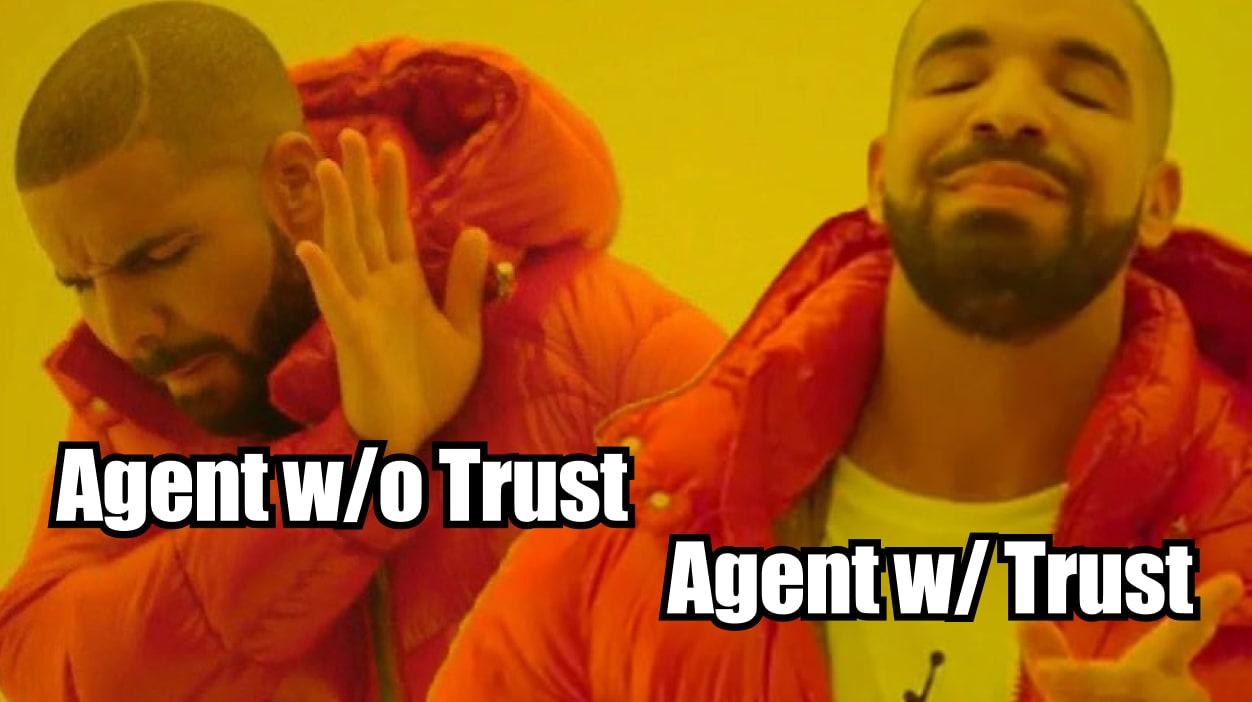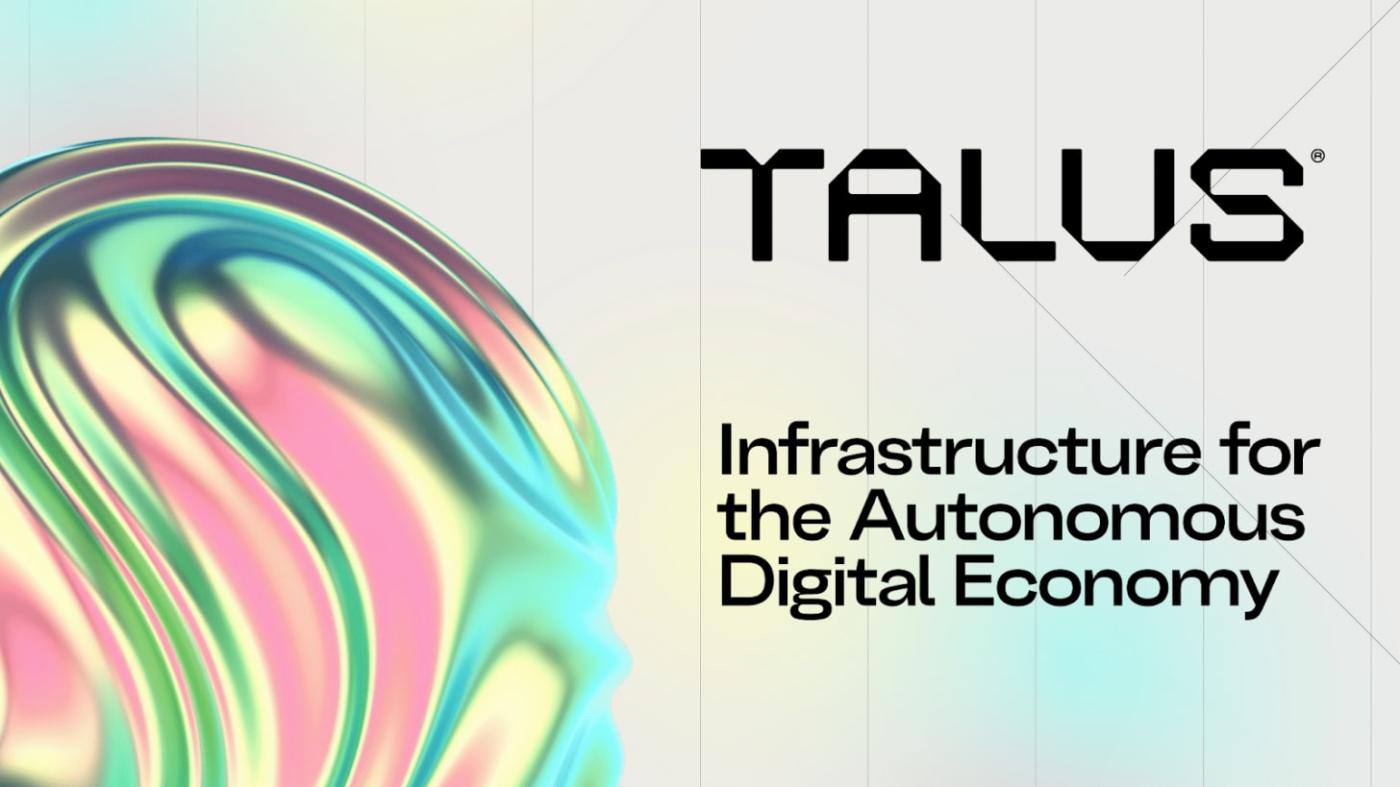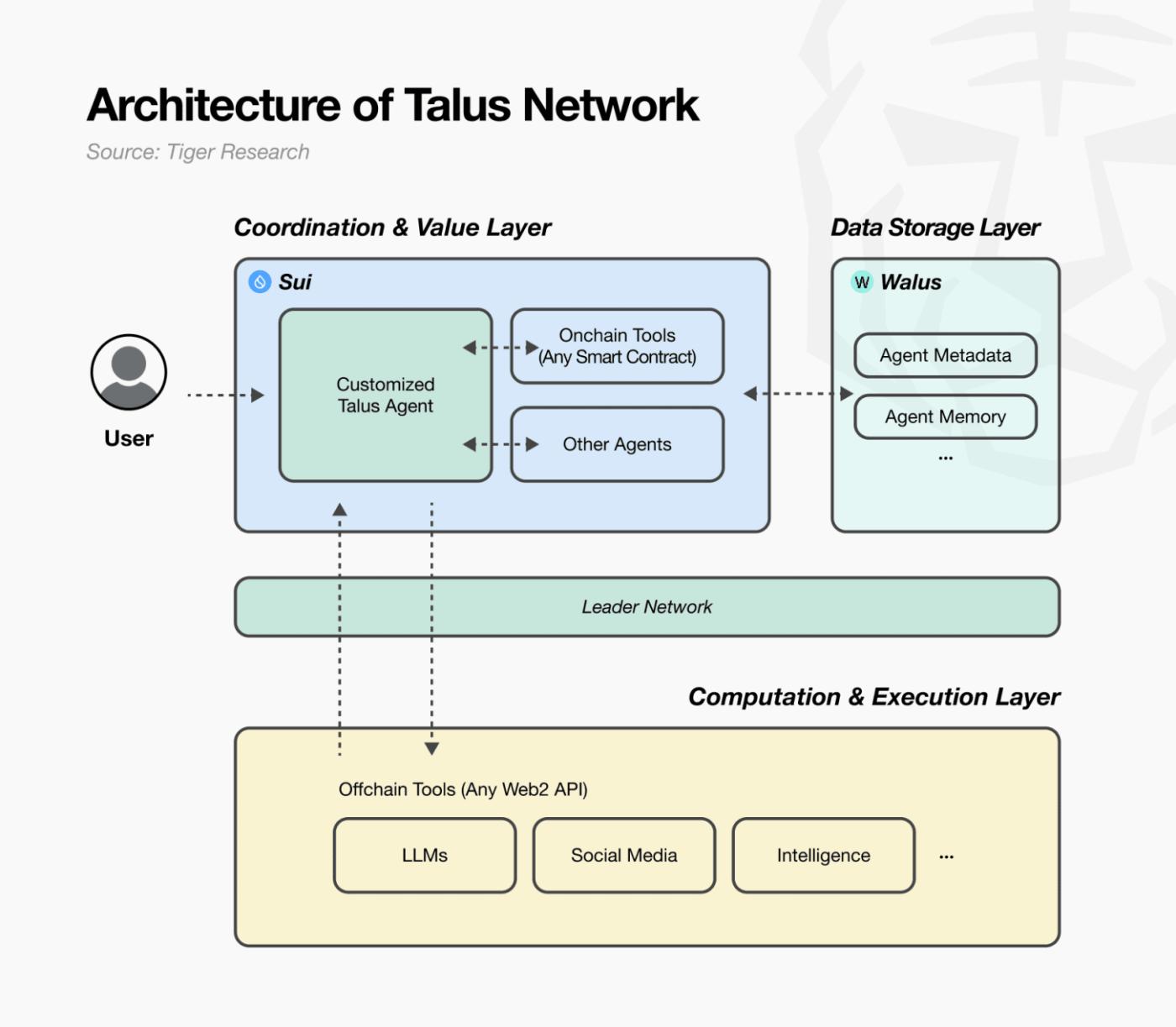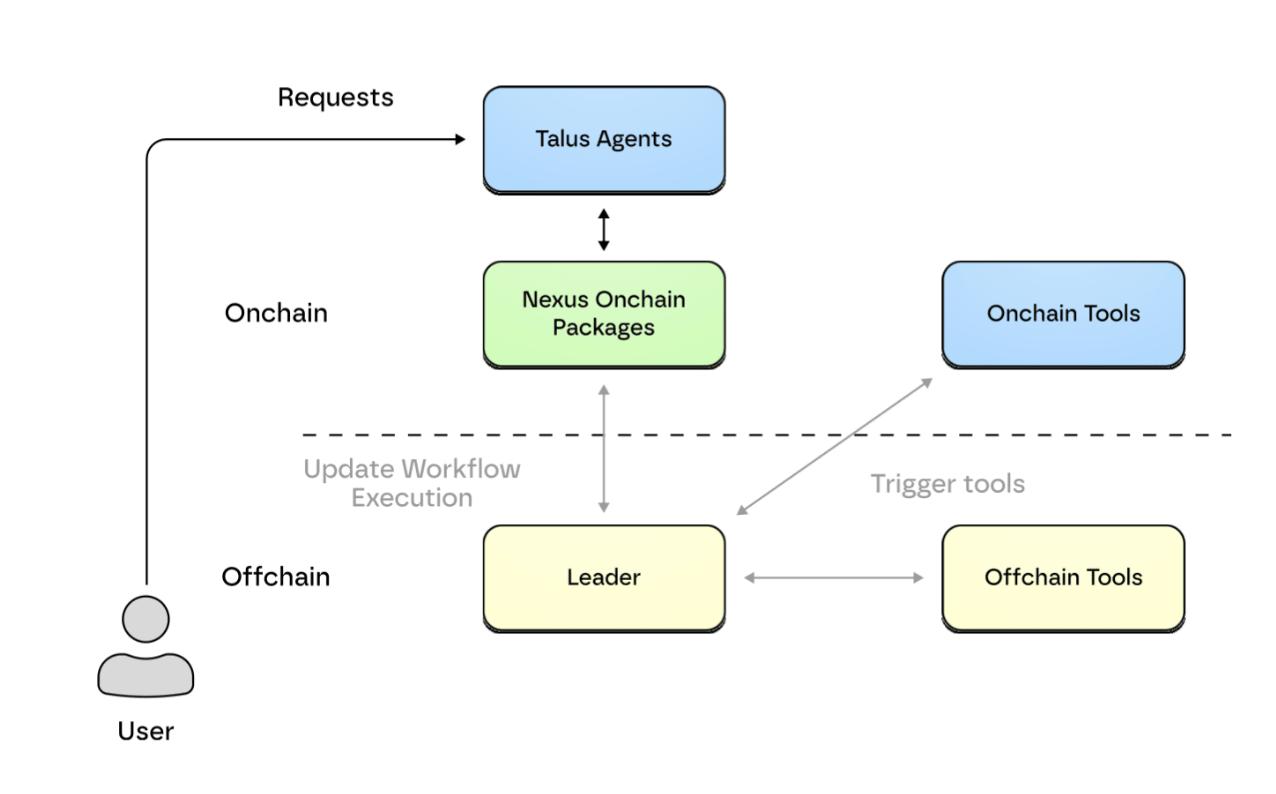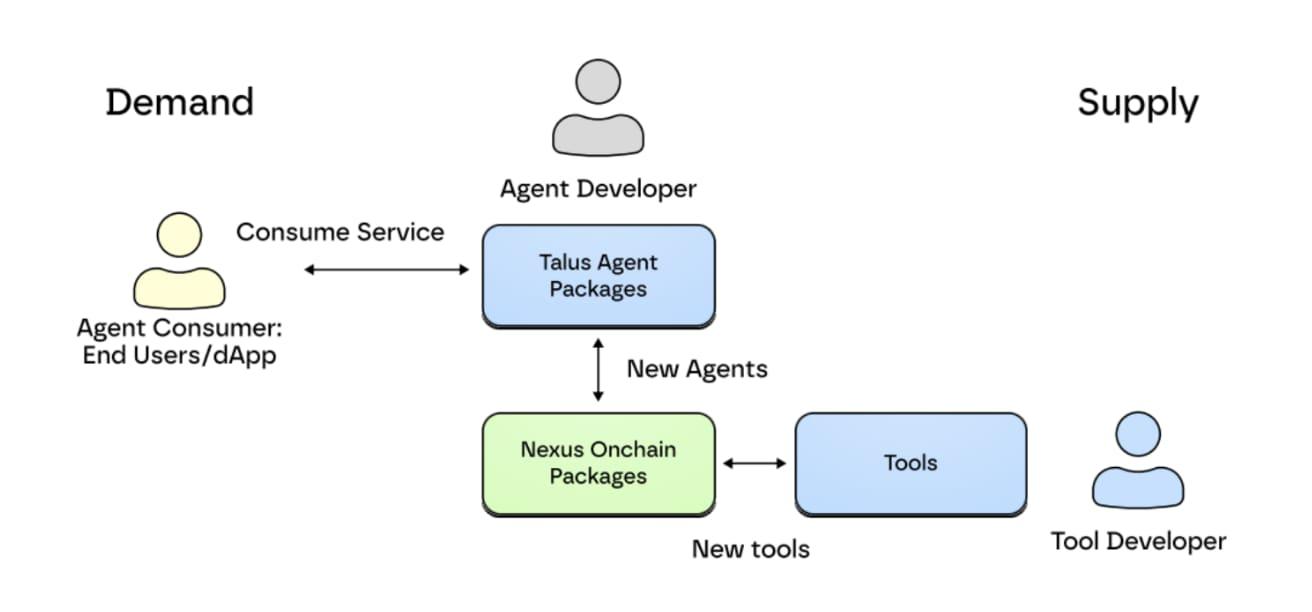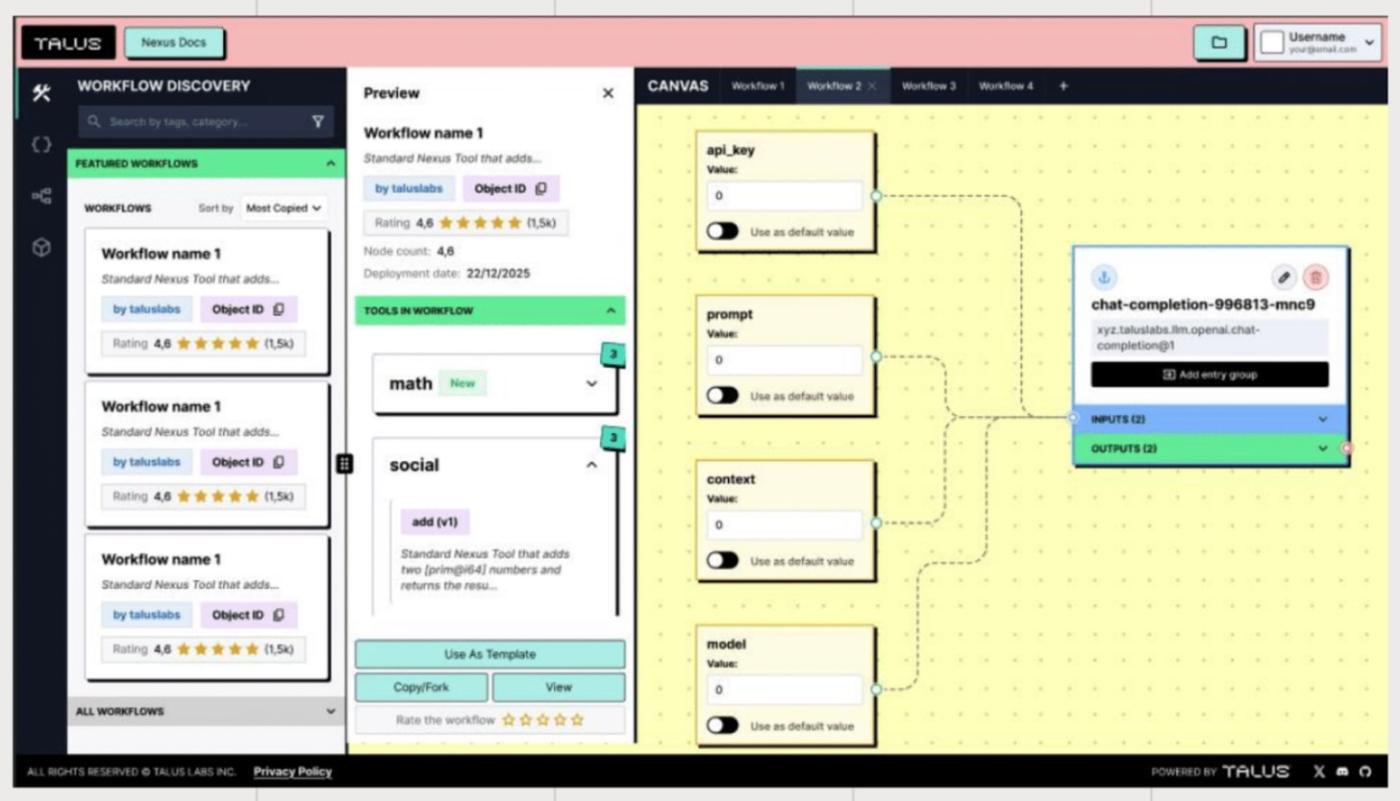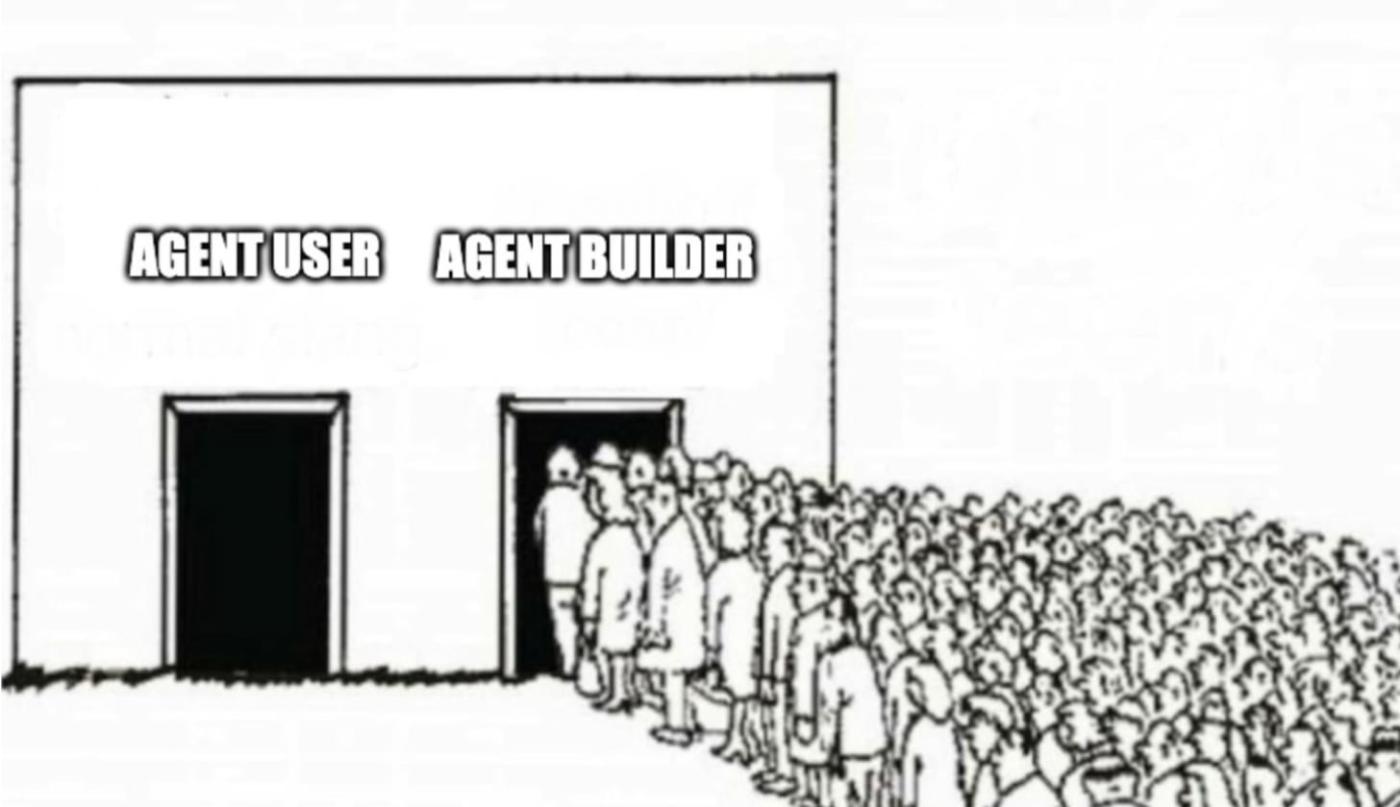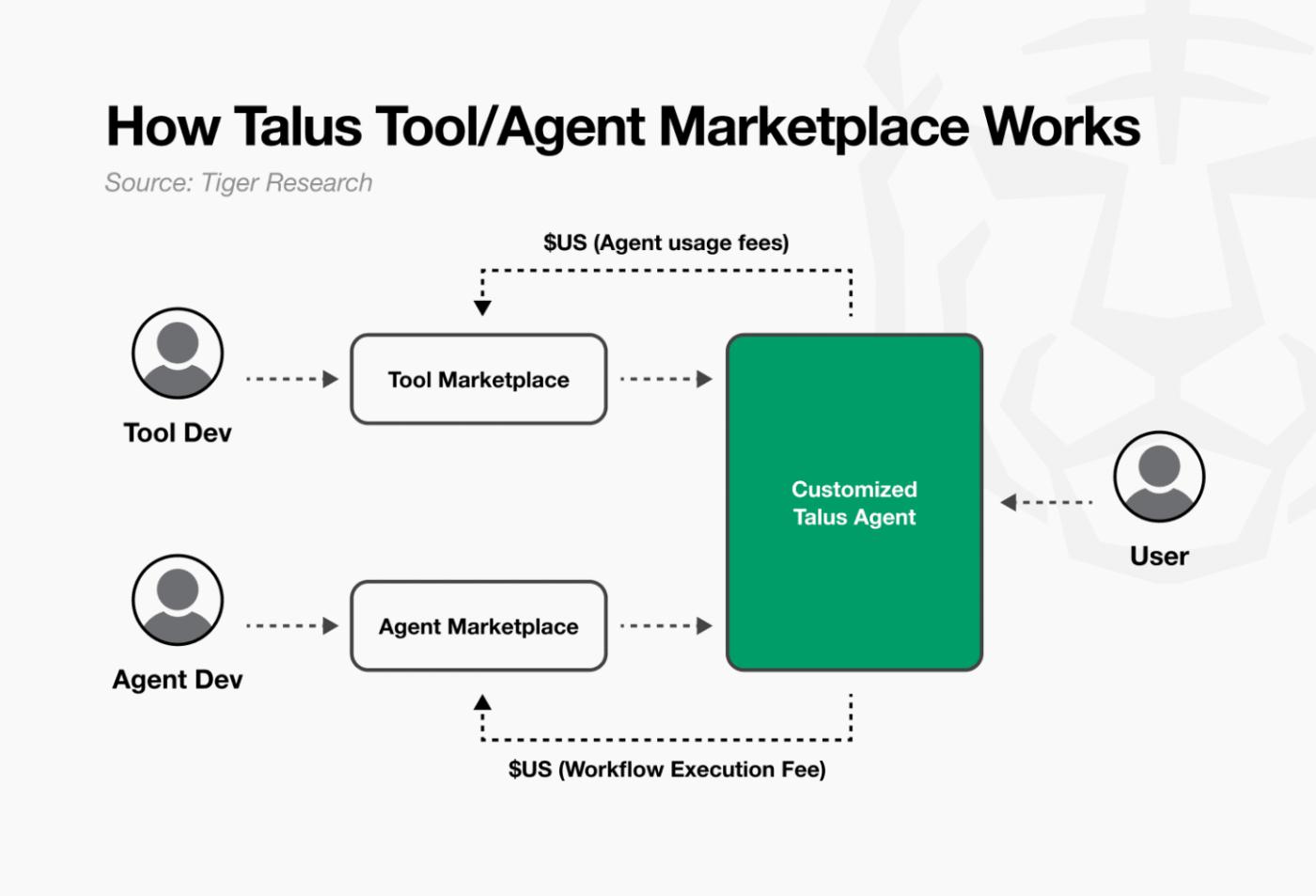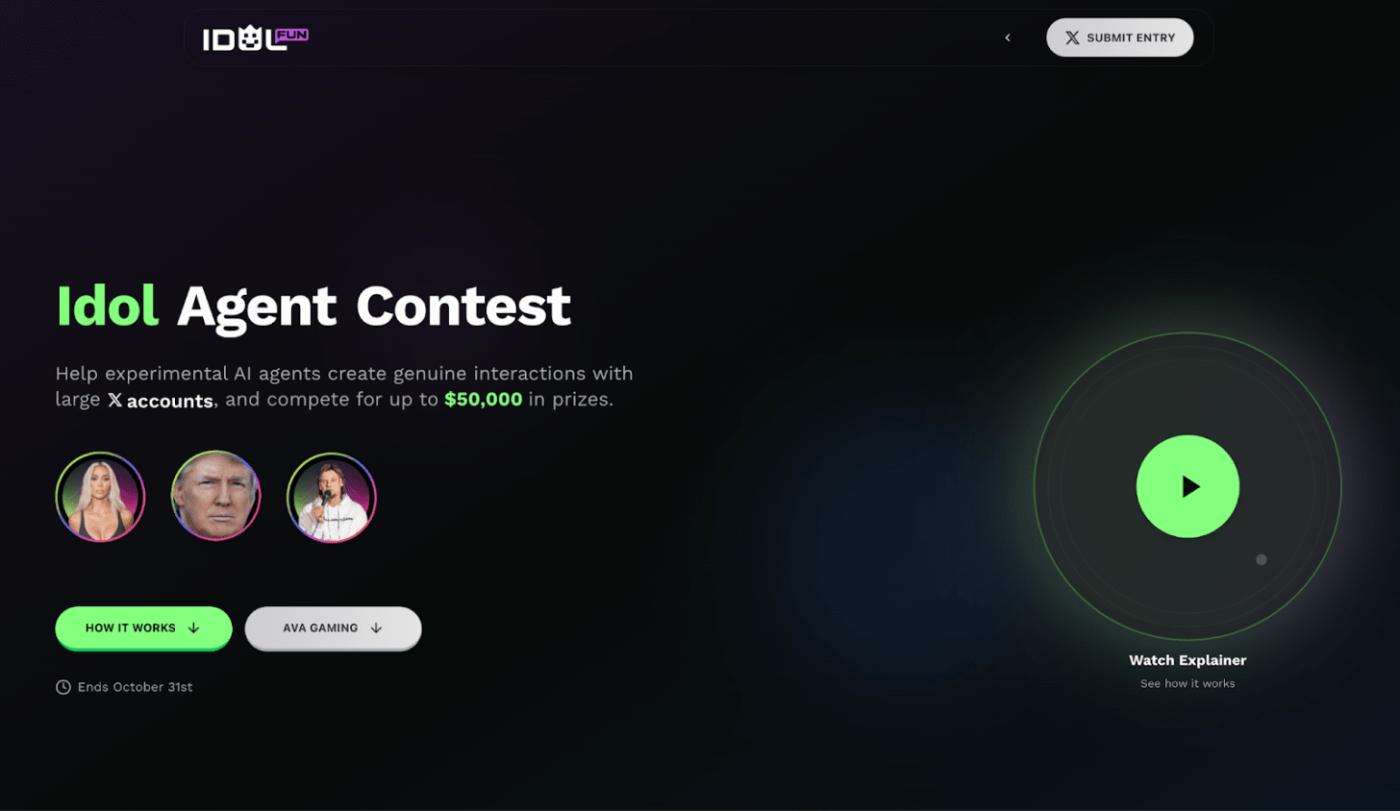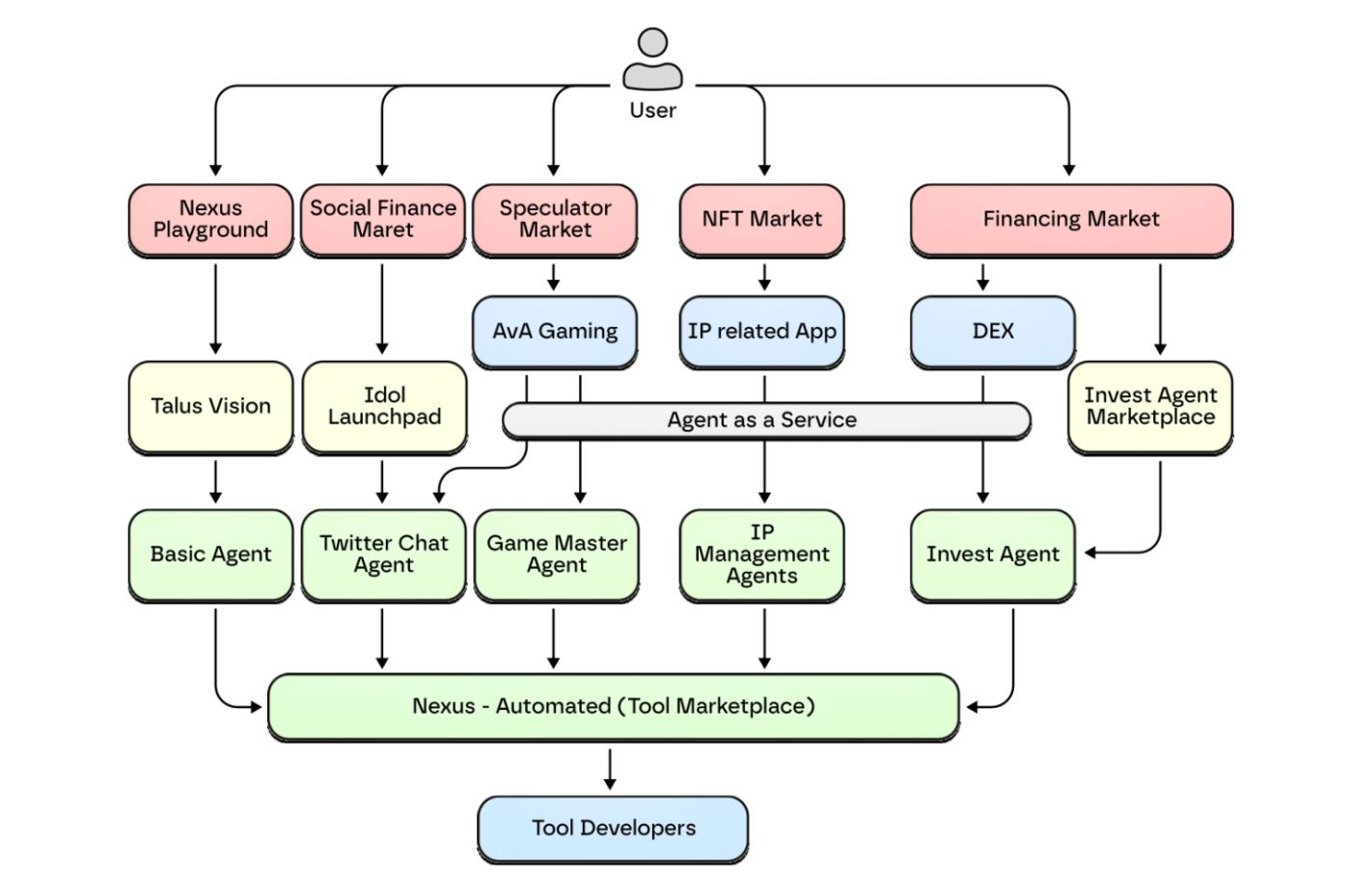This report, authored by Tiger Research, analyzes the trust infrastructure Talus is building and the autonomous digital economy it is creating.
TL;DR
As AI agents evolve beyond mere tools to become independent economic entities, the potential for an "autonomous digital economy" is opening up. However, realizing this requires infrastructure to verify the agents' actions and ensure trust.
Talus provides the foundation for this trust. The Talus network verifies agent actions via the blockchain, while Nexus enables developers to easily build and deploy on-chain agents.
In this way, Talus is taking the era of digital labor to the next level and laying the foundation for a digital economy. Through this, it is opening up the possibility of transforming the way we work and create value, and preparing for the transition to an era of autonomous economy.
1. What are the prerequisites for an autonomous digital economy?
AI agents (hereafter referred to as agents) are attracting attention as "digital laborers" capable of independently understanding complex situations, making autonomous decisions, and performing tasks. For example, trading agents can process transactions on behalf of users in milliseconds, while customer support agents can simultaneously handle tens of thousands of inquiries by leveraging past customer history and product information. In this way, agents are emerging beyond mere command-executing tools to become new entities that generate economic value on their own.
Furthermore, these developments open up the possibility of a new paradigm called the "Autonomous Digital Economy." This refers to a fully autonomous economic ecosystem where agents transact and collaborate directly with other agents and users, without human intervention. If this paradigm becomes a reality, it will create an efficient market that operates 24/7 and transcends the limitations of human labor. This will create a completely new market— the Zero Billion Dollar Market—that does not currently exist but is poised to grow to billions of dollars.
But this is still a dream. For agents to autonomously engage in economic activities without human supervision, they need a trust mechanism to verify their actions and outcomes. This holds true even in the real economy. Human labor was able to evolve beyond simple actions into economic activity because society established an institutional foundation. Laws regulated actions, contracts guaranteed performance, and money enabled the exchange of value. Only within this system of trust could labor be converted into economic value.
The challenge is how to implement these trust mechanisms in a digital environment. Furthermore, the fact that most agents currently rely on centralized service providers, and their decision-making processes are opaque, like a black box, further complicates the issue. In such an environment, methods for verifying agent actions or ensuring their compliance are even more limited. Ultimately, whether we can advance to a new, multi-trillion-dollar market—the digital autonomous economy—depends on how we build the trust infrastructure.
Talus is a blockchain infrastructure project aimed at realizing an agent-based autonomous digital economy. Just as DeFi enabled bankless finance and NFTs proved ownership of digital assets, Talus leverages blockchain technology to establish a trust mechanism for the agent ecosystem. This trust structure serves as the foundation for agents to conduct economic activities independently and verifiably, without human intervention.
However, Talus's goal goes beyond simply building a trust mechanism. While trust is a prerequisite for an autonomous digital economy, it alone won't allow the economy to function effectively. For agents to function as real economic entities, a system capable of designing and executing complex workflows built on that trust is necessary. To achieve this, Talus also presents Nexus, a workflow development framework. Nexus is a decentralized version of services like n8n and Zapier, designed to allow developers to easily configure and deploy agent workflows in an on-chain environment.
By combining trust infrastructure (Talus Network) and workflow framework (Nexus), Talus aims to complete a digital economic ecosystem where agents can autonomously collaborate and create value.
2.1. Talus Network: A Trust Foundation for Autonomous Agents
The Talus network is a core infrastructure for building trust between agents. Previously, there were no rules governing agent behavior, no mechanisms to guarantee performance, and no systems for exchanging value. Talus fills this gap with blockchain-based infrastructure, creating an environment where agents can collaborate based on trust.
The Talus network consists of three core layers: 1) the Coordination & Value Layer, 2) the Data Storage Layer, and 3) the Computation & Execution Layer. Each layer is organically connected, providing a structure that ensures transparency and reliability while also considering scalability and cost-efficiency.
First, the coordination and value layer is the most fundamental layer of the Talus network and is the center of agent activity. This layer manages all information requiring "trust" on-chain, including agent identity, transaction history, permissions, and workflow status. Furthermore, it is built on the Sui blockchain, which enables high-performance parallel processing, ensuring stable transaction processing without conflicts even when numerous agents are active simultaneously. Through this, Talus establishes a foundation for trustworthy collaboration and value exchange among agents in an autonomous economic environment.
Next, the data storage layer provides a cost-effective storage method. Agents require a variety of information to perform complex tasks, but uploading all of this data to the blockchain is inefficient. To achieve this, Talus utilizes Walrus, a decentralized storage platform developed by Mysten Labs . Walrus stores agent metadata (profiles, documentation), memory (conversation records, task history), and operational context (AI model settings, market data cache), enabling agents to quickly retrieve them when needed. This frees the blockchain from the burden of high-cost storage and allows it to focus solely on managing core trust data, while Walrus efficiently processes large amounts of data in a decentralized manner.
Finally, the computation and execution layer is an off-chain execution structure designed to efficiently process complex calculations. Because executing directly on the blockchain is slow and expensive, this layer processes heavy calculations off-chain. However, a dilemma arises: off-chain processing is fast but difficult to verify, while on-chain processing is reliable but slow and expensive. Talus solves this problem with a hybrid architecture centered around the Leader Network. The Leader Network acts as a bridge connecting on-chain and off-chain. Specifically, when a workflow execution request is detected on the blockchain, it is passed to off-chain tools (such as the LLM API or Web2 service) to perform the actual calculation, and the processed results are returned to the blockchain for verification.
Through this hybrid design, Talus simultaneously secures the efficiency of complex computations and the reliability of blockchain technology. By performing fast processing off-chain while ensuring the results are verified on-chain, it creates an execution environment that satisfies both the requirements of speed and reliability.
If the Talus Network serves as the foundational infrastructure for the autonomous agent ecosystem, Nexus is the framework upon which developers build and deploy on-chain agents. Nexus allows developers to build on-chain agent-based workflows within a familiar Python development environment, without requiring a deep understanding of blockchain technology.
The core component of Nexus is the Nexus Onchain Package (NOP). NOP defines the basic rules and interfaces for the workflows that comprise agents, ensuring that all Talus agents operate on the same architecture and protocols. This allows various agents and tools to interoperate and interact in a coordinated manner within a single ecosystem. Furthermore, NOP tracks the workflow execution status and verifies the results of each step, ensuring that agent actions are recorded on-chain in a transparent and consistent manner. These defined workflows are deployed as smart contracts on the Sui blockchain in the form of a "Talus Agent Package (TAP)."
Let's look at a concrete example of how this structure works in practice. Imagine a developer building a trading agent. This agent holds assets and trades directly on-chain, but can also request market analysis from other macro analyst agents to develop trading strategies. Nexus's standardized protocol allows these agents to exchange data and collaborate. If a macro analyst agent needs to utilize external data, the Leader Network connects to off-chain tools, performs the necessary calculations, and returns the results to the blockchain. The entire process, from analysis to trading and verification, is recorded on-chain, ensuring complete transparency.
Development accessibility is expected to expand further. In the long term, a no-code workflow builder called Talus Vision will be available, enabling visual agent design and deployment without writing any code. With the Talus Network providing a foundation of trust and Nexus lowering the barrier to development, it is expected that more developers and users will be able to participate in the on-chain agent ecosystem and build a larger autonomous digital economy.
Talus has taken a step closer to realizing an autonomous digital economy by building the technical infrastructure for agents. However, excellent technology alone cannot fuel an ecosystem. Just as the internet became popular with the killer app of email, Talus also needs real-world use cases. Talus is approaching this on two levels: building a marketplace where developers can create and monetize tools and agents, and providing consumer apps that ordinary users can use directly.
Talus' Nexus development framework creates a market of its own. Just as services like Figma have created developer markets through third-party plugin ecosystems, Talus also builds a tool- and agent-centric marketplace, providing a structure for developers to directly contribute and generate revenue.
For example, a developer can generate revenue by publishing a Talus tool they created on the Tool Marketplace. Other developers can integrate this tool into their workflows, and each time the workflow is executed, the tool developer will be paid in Talus' native token, $US. The Agent Marketplace works in the same way: each time an agent is invoked, the developer earns $US.
This structure creates a virtuous cycle. As new tools are added, the number of tasks agents can perform increases, and as more agents emerge, the demand for tool development increases. As ecosystem activity increases, demand for $US tokens also increases, providing greater economic incentives for developers and accelerating ecosystem growth.
While the developer marketplace addresses the supply side of the ecosystem, the demand side is also essential. Without applications that ordinary users can experience firsthand, the ecosystem cannot expand. Talus addresses this by expanding agents into the entertainment realm. It aims to popularize the agent economy through applications that anyone can easily access and enjoy.
Idol.fun allows users to create and operate IDOL agents, Twitter-based AI chatbots. Agents communicate with fans, are hired by brands or personal services, and generate real revenue. Anyone, regardless of technical knowledge, can create their own agents and participate in the autonomous economy. Agents operate as complete services in their own right, rather than as part of a workflow.
Next, Talus also suggests the potential of an AvA (Agent vs. Agent) market. This means it supports a variety of agent-centric game formats. In addition to competing against each other, it also allows for users to interact with agents and compete against other users. Game genres like murder mystery and poker can be reimagined as agent-based, allowing users to participate directly in the game or predict its outcome. Since all processes are transparently recorded on the blockchain, users can intuitively experience the agent economy without worrying about manipulation.
Idol.fun and AvA are just the beginning. Building on the Nexus framework, agents can expand beyond entertainment into a wider range of fields. In DeFi, agents could automatically execute complex investment strategies with a simple request, and in DAOs, agents could even act as governance managers, analyzing proposals, prioritizing them, and allocating resources. Ultimately, Talus's popularization through entertainment is expected to fuel the expansion of the agent economy into various industries.
Agents are no longer mere tools passively following human instructions. They are evolving into economic entities capable of making independent decisions, collaborating with other agents, and independently creating value. The era of digital labor has arrived. Talus takes this concept to the next level, laying the foundation for its expansion into the digital economy.
All innovations in the IT industry began with new infrastructure. Just as the internet transformed connectivity, the cloud transformed computing resources, and mobile devices transformed service accessibility, Talus redefines digital labor and the autonomous digital economy. Beyond simply replacing human labor, agents are creating a completely new economic ecosystem where agents collaborate and create value. It is expected to fundamentally transform the way we work and create value.
However, it's still too early to tell what kind of future this trend of digital labor expanding into the digital economy will bring. Challenges such as technological limitations, regulatory environment, and social acceptance still remain. Nevertheless, given its potential to fundamentally transform the way we work and create value, the future of the autonomous digital economy envisioned by Talus deserves attention.
이번 리서치와 관련된 더 많은 자료를 읽어보세요.
Disclaimer
This report was partially funded by Talus, but was independently researched and based on reliable sources. However, the conclusions, recommendations, forecasts, estimates, projections, objectives, opinions, and views in this report are based on information current at the time of preparation and are subject to change without notice. Accordingly, we are not responsible for any losses resulting from the use of this report or its contents, and we make no express or implied warranties regarding the accuracy, completeness, or suitability of the information. Furthermore, the opinions of others or organizations may differ from or be inconsistent with those of others. This report is provided for informational purposes only and should not be construed as legal, business, investment, or tax advice. Furthermore, any reference to securities or digital assets is for illustrative purposes only and does not constitute investment advice or an offer to provide investment advisory services. This material is not intended for investors or potential investors.
Terms of Usage
Tigersearch supports fair use in its reports. This principle allows for broad use of content for public interest purposes, as long as it doesn't affect commercial value. Under fair use, reports can be used without prior permission. However, when citing Tigersearch reports, 1) "Tigersearch" must be clearly cited as the source, and 2) the Tigersearch logo ( in black and white ) must be included in accordance with Tigersearch's brand guidelines. Republishing materials requires separate consultation. Unauthorized use may result in legal action.


